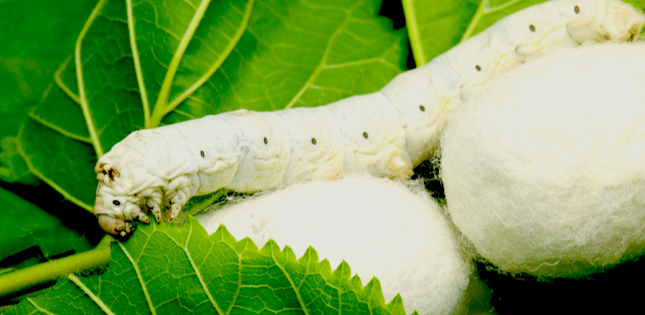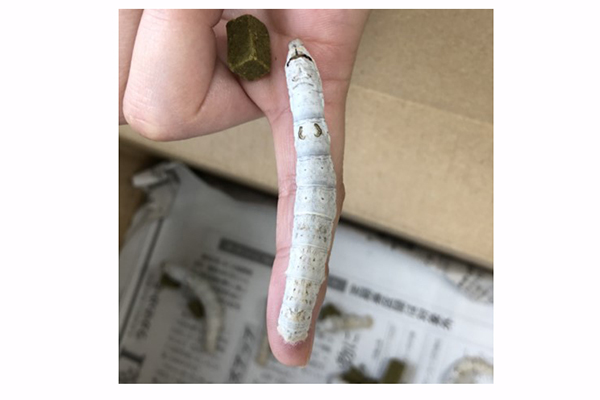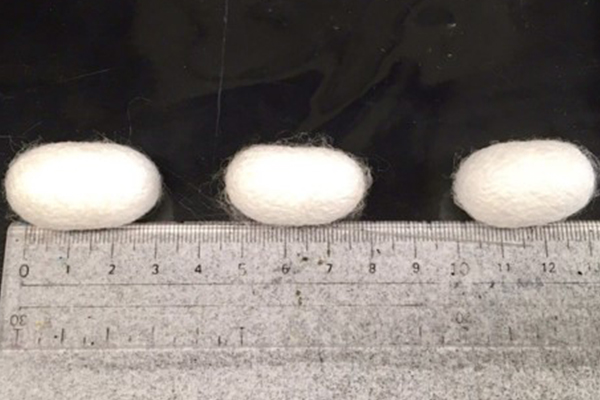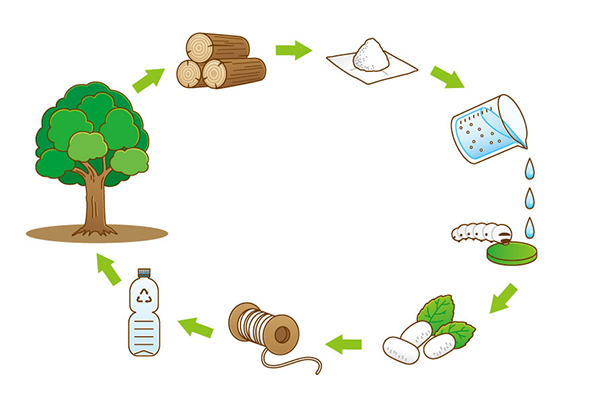
Tohoku University researchers have produced cellulose nanofiber (CNF) synthesized silk naturally through a simple tweak to silkworms' diet. Mixing CNF with commercially available food and feeding the silkworms resulted in a stronger and more tensile silk.
The results of their research were published in the journal Materials and Design on February 1, 2021.
"The idea for our research came to us when we realized the flow-focusing method by which silkworms produce silk is optimal for the nanofibril alignment of CNF," said Tohoku University materials engineer Fumio Narita and co-author of the study.

The silk worm and its CNF containing feed. ©Tohoku University
Silk is usually associated with clothes. But its usage is incredibly diverse thanks to its strength and elastic properties. Its biocompatibility makes it even safe to use inside the human body.
Because of this, researchers have been investigating ways to further strengthen silk. Processes investigated thus far, however, require the use of toxic chemicals that are harmful to humans and the environment.
Cellulose nanofibers--plant derived fibers that have been refined to the micro-level-- show promise in synthesizing low-cost, lightweight, high strength, and sustainable nanocomposites such as silk.
However, previous CNF based synthesized materials have demonstrated few mechanical improvements even with the benefit of expensive equipment due to the lack of nanofibril alignment.
In contrast, silkworms produce silk in a flow-focused method. Silk is dispersed via their salivary glands, orientating the fibrils along the flow direction and thus enabling better nanofibril alignment.

The resultant cocoons with different CNF wt% (0,5, and 10 wt% from left to right). ©Tohoku University
In the present study, silkworm larvae were divided into three groups and reared on food containing differing amounts of CNF content. The research group performed strength tests on the drawn silk fibers which were found to be about 2.0 times stronger than the silk from non-CNF fed silkworms.
"Our findings demonstrate an environmentally friendly way to produce sustainable biomaterials by simply using the CNF as bait," said Narita.

An illustration showing the sustainable cycle of CNF synthesized silk production based on the current study. ©Tohoku University